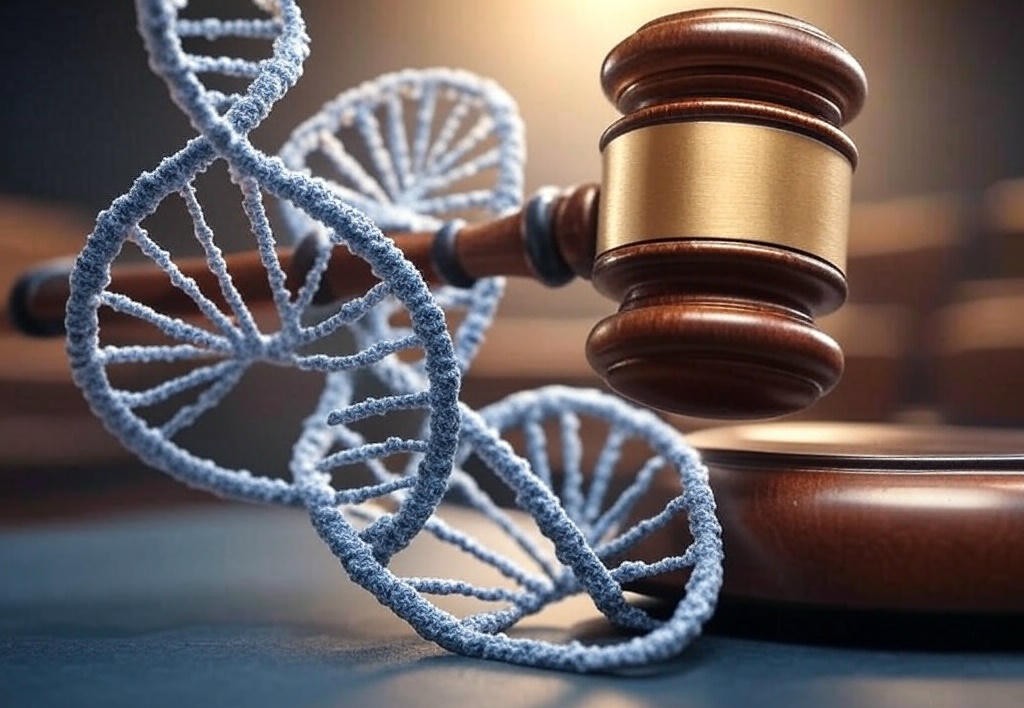INTRODUCTION
DNA, which is Deoxyribonucleic acid, helps us to distinguish identities. It is claimed that 99.9% DNA of all humans is identical, but 0.1% DNA is completely different and can help to identify different people. DNA can be sampled from skin, saliva, hair, blood, or cells. DNA profiling started in the 1980s and has helped magnificently.
This article studies the use of DNA profiling in case laws and legal landscape. There are several popular cases in which the courts have established rules regarding DNA profiling. In India as well, DNA testing plays a significant law in Indian Evidence law now. DNA testing has a significant trend over the globe.
EARLY INSTANCES OF DNA TESTING
DNA testing was initially used in criminal investigations to prove innocence as opposed to guilt. A young person with learning disabilities named Richard Buckland was detained in 1986 after he raped and killed 15-year-old Dawn Ashworth in the United Kingdom. Alec Jeffreys, a British geneticist, became aware of the situation. He demonstrated that the semen recovered on Ashworth’s body was not Buckland’s by analyzing DNA extracted from it.
Additionally, Jeffreys showed that the person who murdered Ashworth had murdered Lynda Mann, another girl, three years prior. Following a protracted inquiry, it was discovered that serial sex offender Colin Pitchfork shared DNA with the semen samples, leading to Buckland’s release from custody. He received a life sentence after being convicted on two charges of murder.
In 1991, a paternity issue case before the Kerala High Court was the first time DNA testing was introduced as evidence in an Indian court. In this instance, Kunhiraman was required to undergo a DNA test to establish Manoj’s paternity. For the first time, DNA fingerprinting was used in Indian court proceedings after the court accepted the results as unassailable proof.
THE GREEN RIVER KILLER CASE
The use of DNA profiling was remarkably validated by the Green River Killer serial murder case, which is among the worst in US history. Between 1982 and 2001, Gary Ridgway raped and strangled at least 49 young women in the state of Washington before being apprehended. He disposed of their remains in the Green River or close by. There were no leads for the cops. Better DNA sample methods produced a significant breakthrough for the police investigation in 2001. DNA samples from semen recovered from four of the victims were compared to one obtained from Ridgway in 1987, when he was interviewed but not charged with the murders. The samples were a perfect match, and Ridgway was given 48 consecutive life sentences after being convicted of murder. He subsequently stated that he had murdered up to 80 women, but the actual number might have been more.
INDIAN LAWS RELATED TO DNA TESTING
The DNA Technology (Use and Application) Regulation Bill, 2019 is the main law governing DNA testing in India. With an emphasis on issues including criminal investigations, missing persons, and identifying dead in catastrophes, this law seeks to provide a legal framework for DNA testing and storage. Existing legislation, such as the Indian Evidence Act and the Code of Criminal Procedure (CrPC), contains particular rules pertaining to DNA profiling and its use in court cases, even if the bill is still being considered.
Indian Constitution:
While Article 21 preserves individual liberty by prohibiting coercion to submit to DNA testing, Article 20(3) protects against self-incrimination.
Indian Evidence Act, 1872:
The Indian Evidence Act’s Sections 45–51 address whether expert testimony—including DNA evidence—can be admitted into court.
Code of Criminal Procedure (CrPC):
In criminal investigations, DNA profiling of suspects and accused individuals is permitted by Sections 53 and 53A of the CrPC; Section 53A expressly addresses DNA profiling for rape suspects. The CrPC was superseded by the Bharatiya Nagarik Suraksha Sanhita (BNSS), 2023.
DNA Technology (Use and Application) Regulation Bill, 2019:
A regulatory framework for DNA testing, including the creation of DNA databases, is proposed by this bill, which is now being examined.
CONCLUSION
Indian laws have shaped and established provisions related to DNA testing and profiling. Both the U.S.A and India have extensive DNA Testing legal provisions which help the courts to identify wrongdoers and victims.
ABOUT THE AUTHOR

SAHIL YADAV, a law student at NLIU Bhopal, is a dedicated and passionate legal writer, who is keen to explore International law, Constitutional Law, Criminal Law, Forensic Psychology and publish research papers and articles on contemporary legal nuances and issues. He is also interested in the intersection of disciplines like history, psychology, political science, philosophy, and sociology with law.

